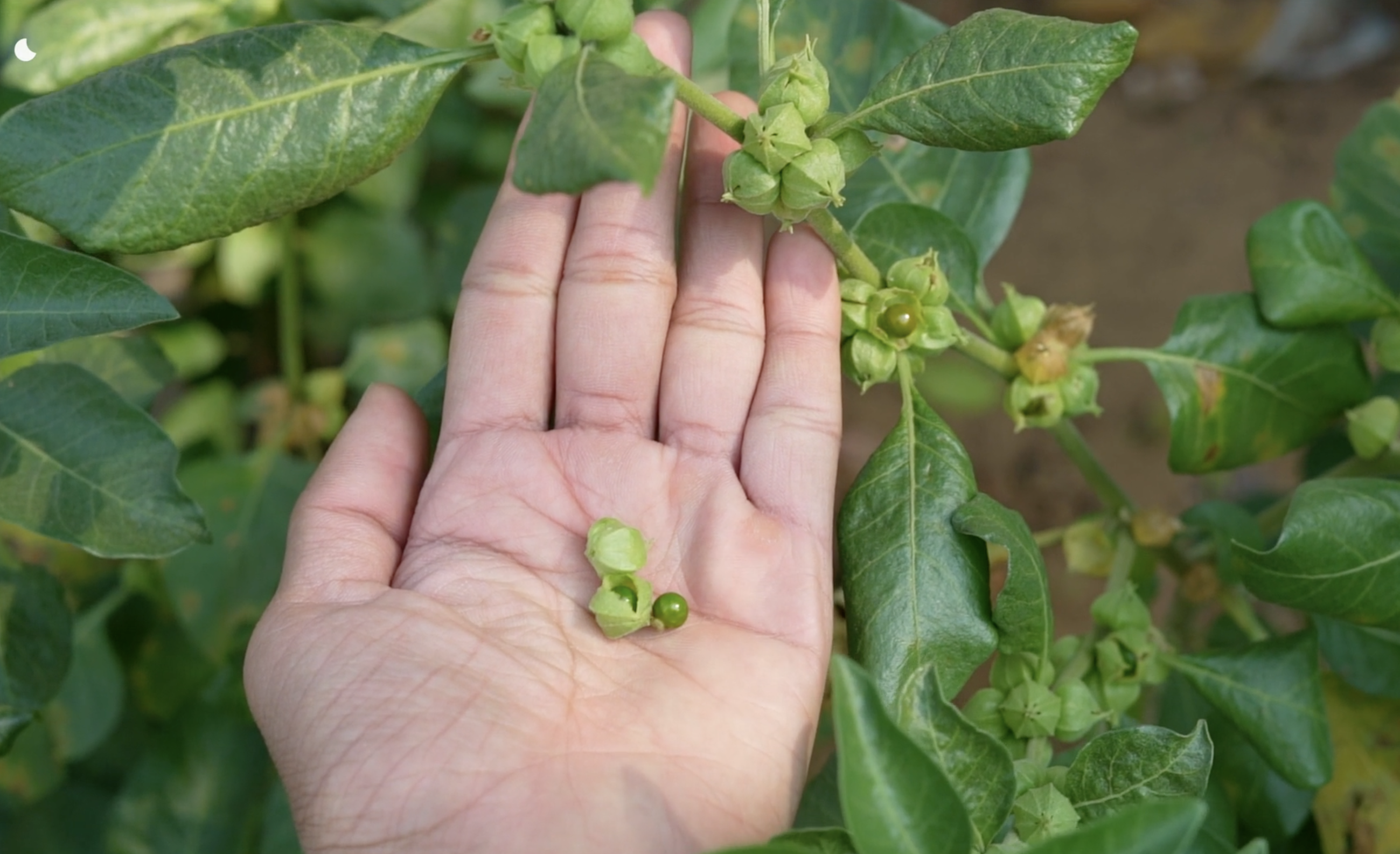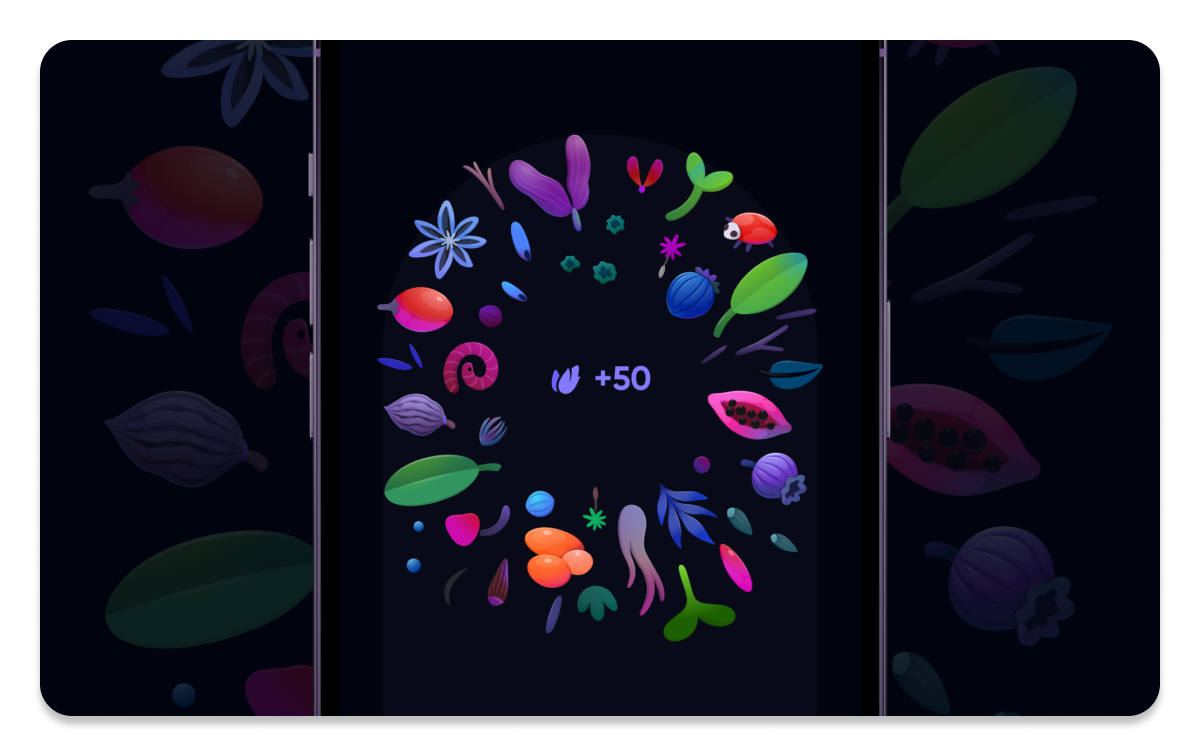
the value of ashwagandha in life (and beyond), according to king tutankhamun
how and why would ashwagandha have been so special to the Boy King?
*This article is written by Dr. Michael Balick, our in-house Ethnobotanist here at sofi. Dr. Balick has worked with indigenous cultures and traditional systems of medicine, all over the world, since the early 1970’s with an incredible and extensive focus on plants, people, and culture.
You can watch the video version of the article by visiting the sofi treehouse here.
During a visit to a museum many years ago, I was looking at one of the floral collars found in the burial tomb of King Tutankhamun of Egypt. The “Boy King”, as he was called, ascended the throne in 1333 BCE at a very young age, some estimates suggesting that he was 8 or 9 years old, where he ruled for a decade. Among the various elements of the collar were olive leaves, poppies and lotus petals, all considered sacred species that would serve him very well in the afterlife.
There were also berries strung on the collar, and examining these closely, I concluded that they were from a plant in the tomato family, a species used for thousands of years as an important therapy in the Mediterranean through much of India and parts of Africa.
Botanists call this plant Withania somnifera, with the species name “somnifera” referring to its traditional use as a sedative. Depending on where it is found, it has several local names—Ashwaghanda, Winter Cherry, and Indian Ginseng. However, it bears no botanical relationship to ginseng, which is in a completely different plant family. That particular common name simply refers to the powerful effects that the plant offers, some of which are similar to different types of ginseng. In herbal medicine Withania somnifera is always known as Ashwaghanda, a name from ancient Sanskrit that translates to “smell of a horse.” Indeed, picking up a piece of the root for the first time, the smell is very strong and not entirely pleasant. There are those who suggest that, in addition to the smell of a horse, it also can provide the stamina of that powerful creature as well.
Ashwagandha is an evergreen shrub that grows to 6 feet tall and produces greenish or yellow flowers that mature to red berries. It is commonly found in areas with in dry stony soil. It has a thick, tuberous taproot which is the basis for most herbal preparations, although in traditional medicine the leaves and berries are also used.
One of the early mentions of its use was more than 3,000 years ago, in Ayurvedic medicine, an ancient medical systems that is still used today to provide traditional health care in India. Ashwaghanda is considered a tonic plant that helps maintain youthfulness, both mental and physical, and has a variety of therapeutic uses, including as a sedative, reducing stress, anxiety and fatigue along with treating pain, arthritis and other conditions. In Ayurvedic medicine, the bitter roots are used to make a tonic wine, or mixed with milk, sugar or rice and offered to the elderly and weak as a restorative food.
It is classified as a plant adaptogen, a term first coined in 1940 by a Russian scientist to describe substances that can enhance our immune function and bolster our ability to cope with the physical and psychological stressors of modern life. In short, given how most of us live, this magnificent and ancient herbal medicine, used successfully for thousands of years, is even more valuable today than ever before.
In my travels in India to study Ayurvedic medicines, I learned how to dry the thick root and prepare it into a powder, and how the medicinal preparation is used to treat bronchitis, asthma, ulcers, insomnia and dementia.
There are many human studies that provide support for these uses, identifying a category of compounds known as withanolides as the active part of the plant. One such compound, withaferin A, has a variety of pharmacological activities including the ability to help shut down the inflammatory process and protect the heart. Chemists have named over 300 different withanolides, a type of steroid found in a wide variety of plants, mostly from the tomato family.
One study, analyzing five randomized controlled trials involving 400 people showed that an extract of this plant had a significant effect on sleep, and this effect was more pronounced on the group of adults with insomnia. In addition, use of an extract of Ashwaghanda was shown to improve mental alertness when people woke up in the morning, along with less anxiety. Another study involving 150 people who struggled with non-restorative sleep, that is to say they got enough sleep but woke up feeling tired, received an extract of Ashwaghanda to determine if their sleep could be improved based a number of criteria. The group that received the extract reported a 72% increase in sleep quality, while the placebo group reported a 29% increase.
Quality of sleep is also related to stress, and an analysis of seven clinical studies showed that Ashwaghanda significantly reduces stress that may be interfering with our sleep. Another study showed the benefits of Ashwaghanda in elderly people aged 65-80, improving sleep quality as well as mental alertness. There seem to be anti-aging properties as well, and while these conclusions were drawn from small studies, researchers feel that this plant shows promise in this area.
In traditional medicine, the leaves of Ashwaghanda have been used to treat small skin wounds, sores and inflammation. Some suggest that rubbing fresh leaves on the skin can repel insects as well!
The plant is easy to grow--simply sow the seeds indoors a couple of months before the last frost date. The seeds germinate quickly, usually within 2 weeks, and can be transplanted outdoors when the weather turns warm. The plant needs a well-drained sandy loam-type soil and full sun or partial shade. By the end of the growing season, the leaves will start to turn yellow and drop off. At this point the plant can be cut down to the ground, and the roots carefully dug up and dried for later use. It is possible to find the seeds of this plant on-line, although recently there have been a number of problems with on-line seed purchases, so be sure to secure your seeds from a reputable source.
To me this is one of the most powerful and important of herbal medicines, one that can help us face the modern world with all of its stresses and issues with sleep. Note that Ashwaghanda should not be used during pregnancy as it is thought to be able to cause miscarriage when taken in large quantities.
Also, it should not be used if you are taking a pharmacological sedative, because of its own natural sedative properties. All of these important properties may explain why Ashwaganda fruits were a part of the floral collar found in the great King Tutankhamun’s tomb...
The beliefs of the time required that people be buried with the treasures they considered necessary for the next world--which raised this question in my mind—Did King Tut consider Ashwaghanda so essential that he ordered it seeds to be placed close to his body so that they could be planted and used for their important benefits in the life to come?
I’d like to think that the answer was yes.

